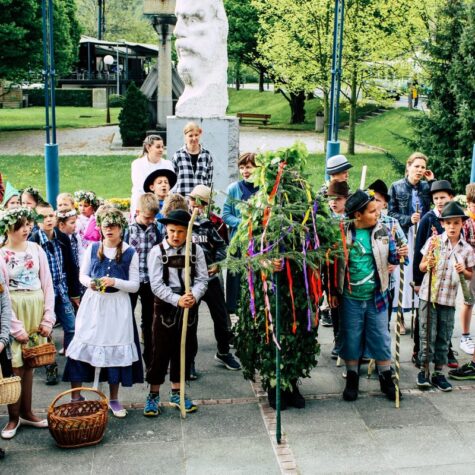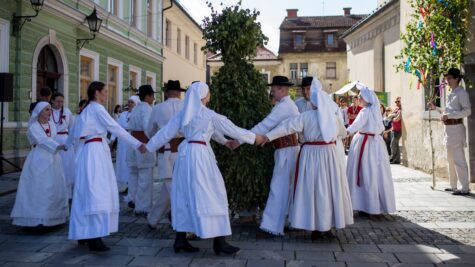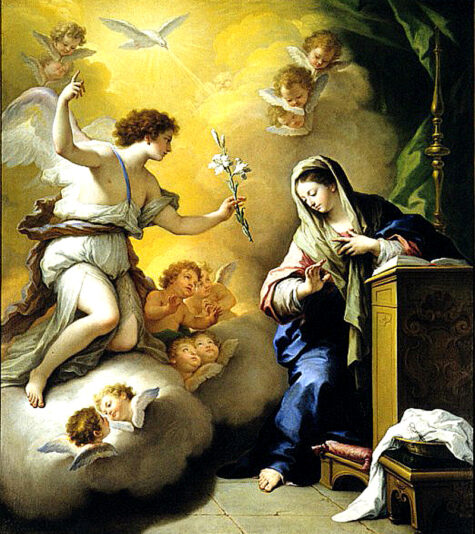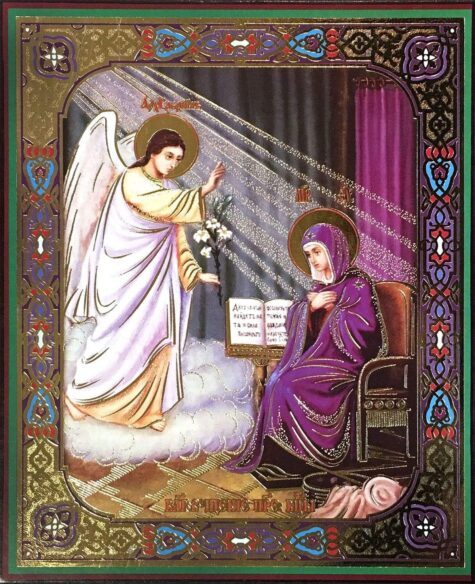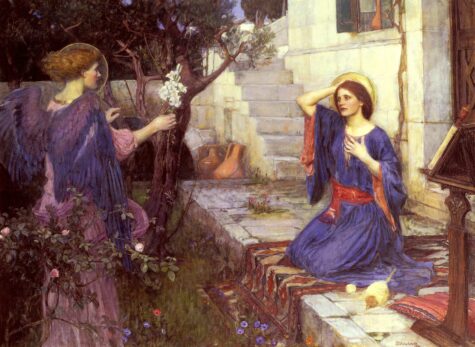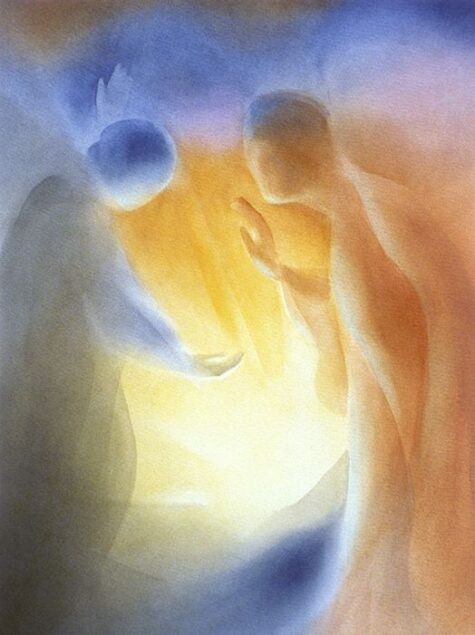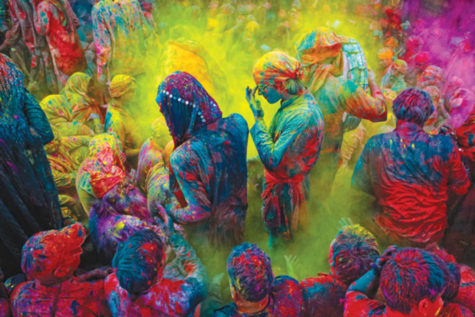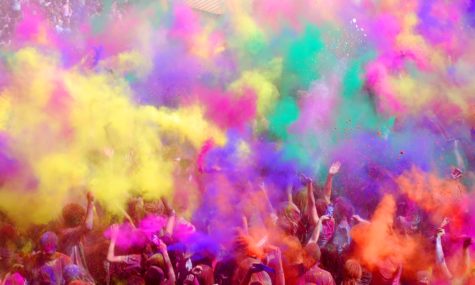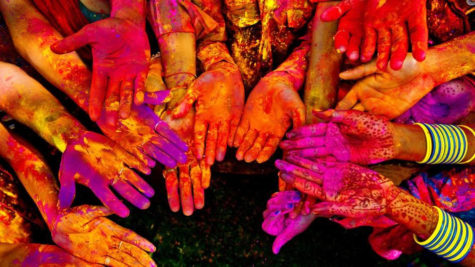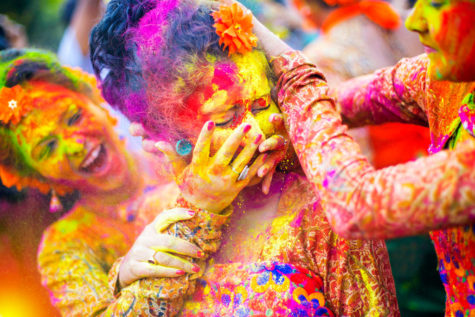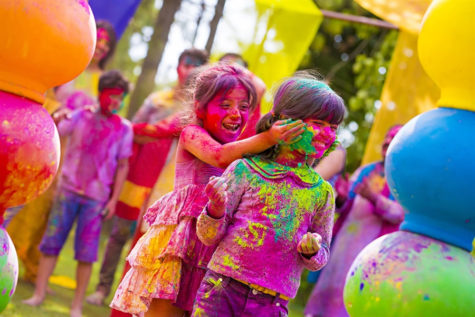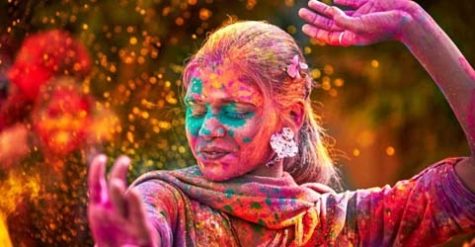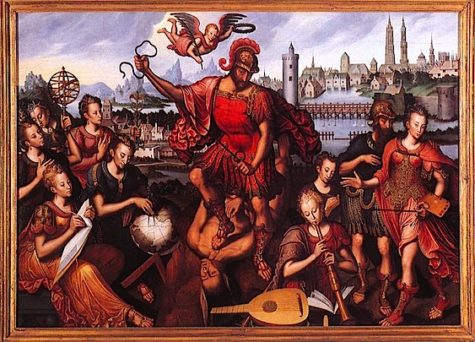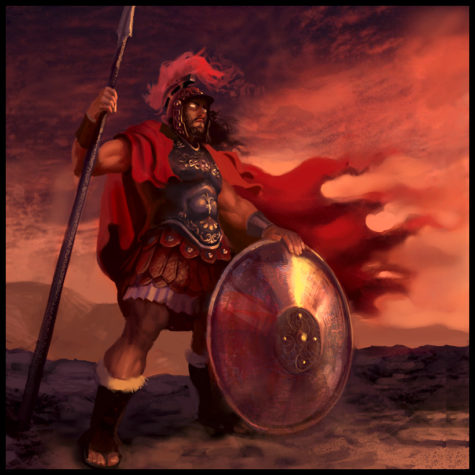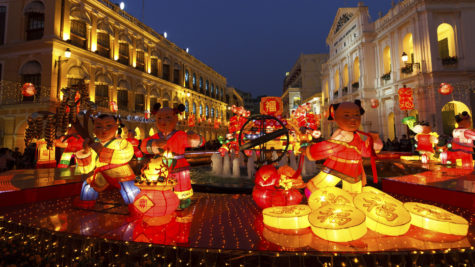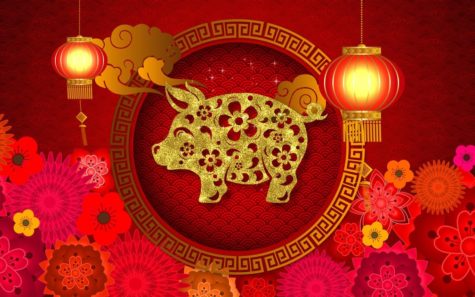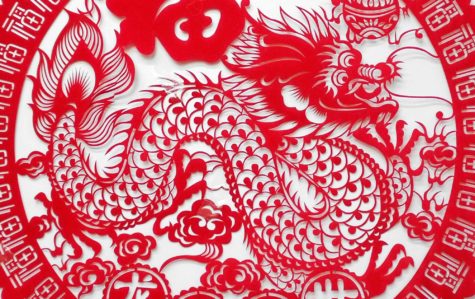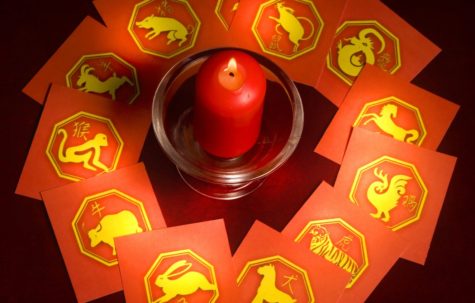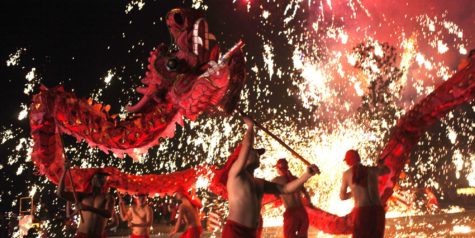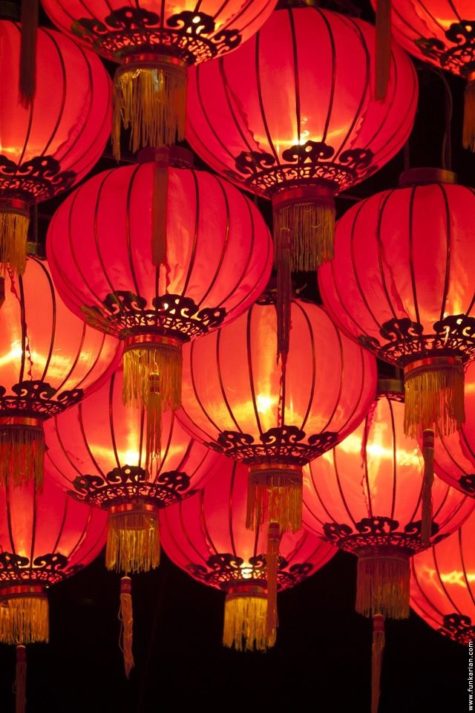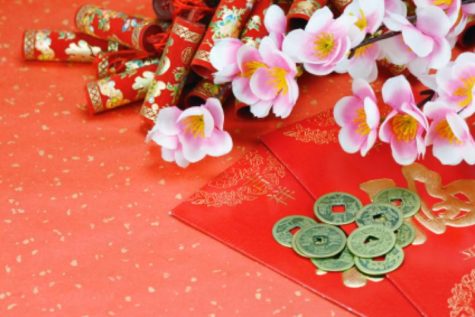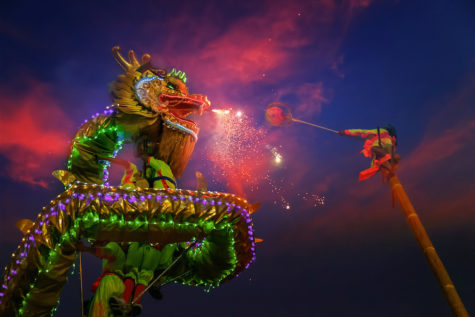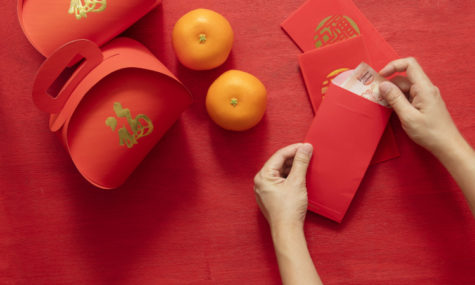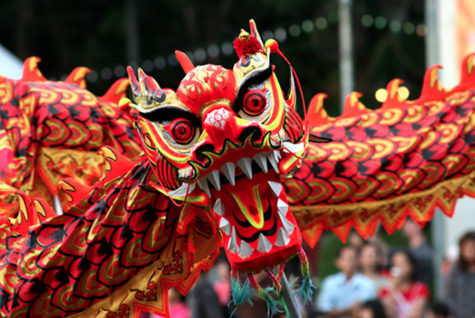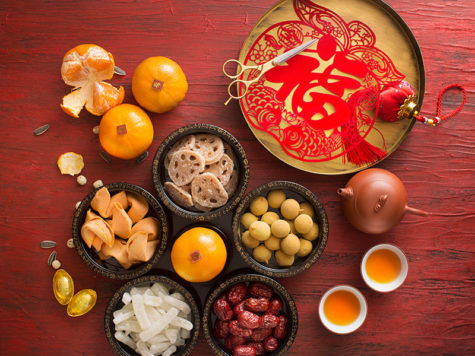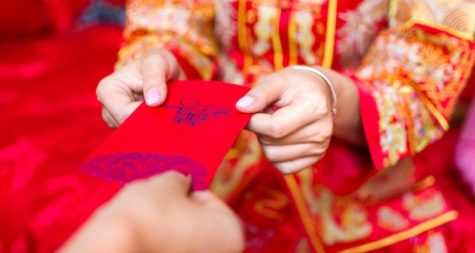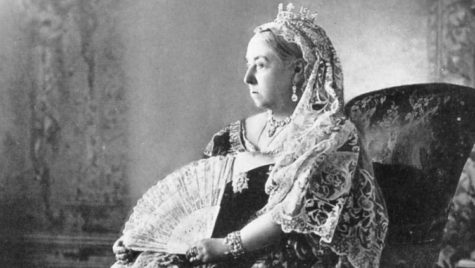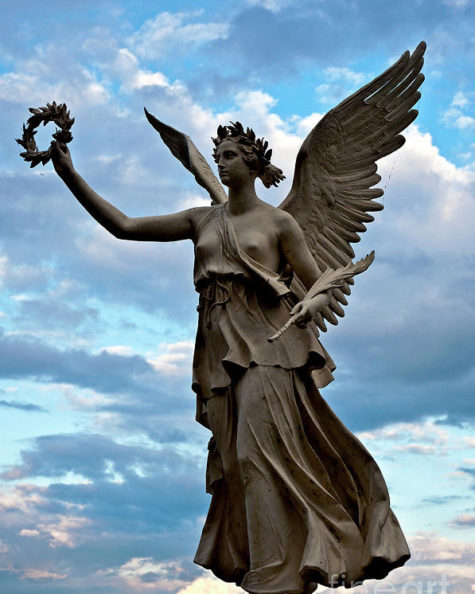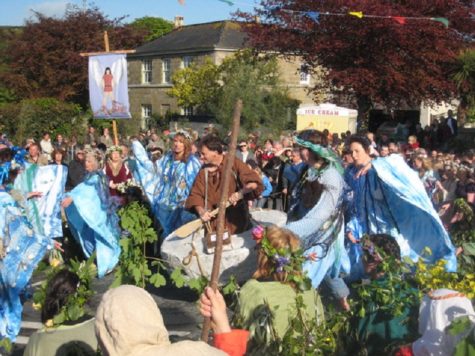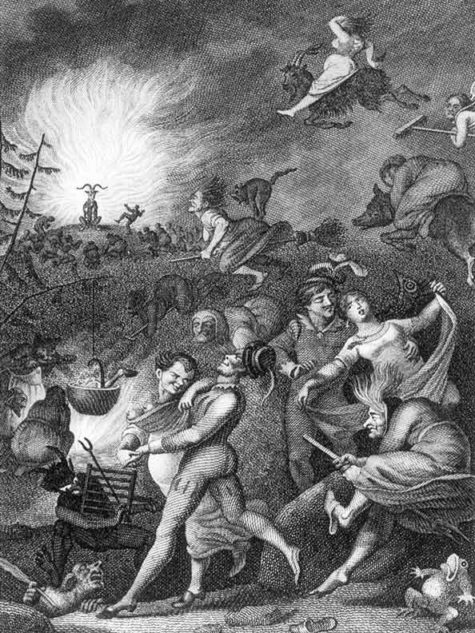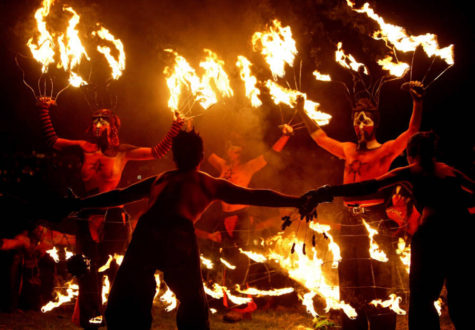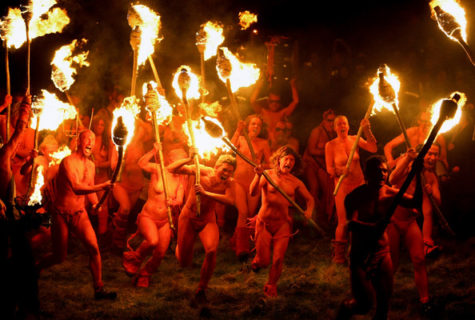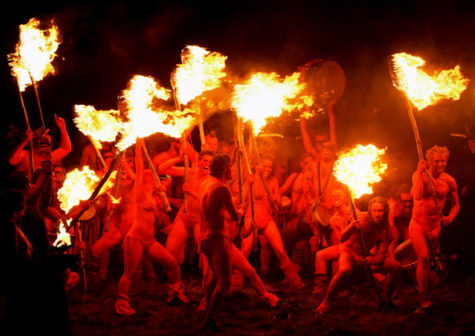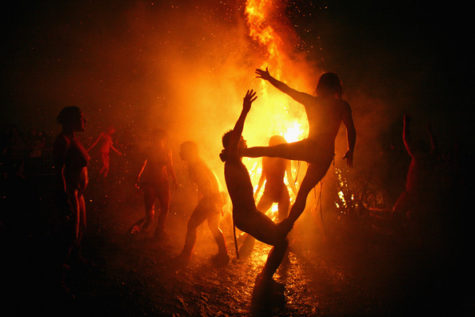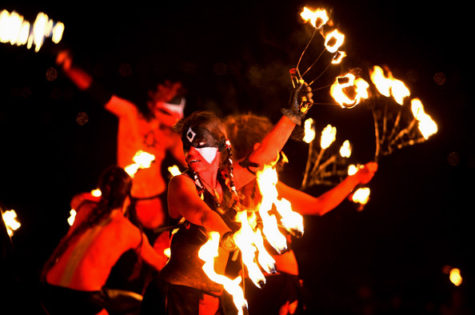Spring Festivals
Traditionally, on 23/24 April, in areas of Eastern Europe including Romania and Slovenia, people would celebrate ‘Green George’ (also known as ‘Zeleni Jurij’) where a young man would be covered in greenery, often birch and sometimes willow, to recognize the advent of spring and the springing of new life.
Celebrations would traditionally often center around a willow tree from which blessings, healings and protections were invoked.
In days gone by, Zeleni Jurij was celebrated differently in various parts of the region, but what the celebrations had in common was the persona of Zeleni Jurij himself: A young man covered entirely in birch branches, often additionally decorated with colored ribbons.
In some places, Zeleni Jurij went from house to house collecting money. Elsewhere, he rode to town on a white horse. In Črnomelj, Zeleni Jurij was paraded through the streets by singing young people who used ancient Slavic verses to interrogate this ancient harbinger of spring.
At the conclusion of the ceremony, Zeleni Jurij – or at least his arboreal covering – was ceremonially thrown into the Lahinja River.
Whatever the details, the celebrations served as an important rite of spring. According to tradition, Zeleni Jurij spent the winter in the cold, dark underworld, and emerged in the springtime to bring warmth and fertility to the land — and mark the final departure of winter.
Zeleni Jurij has its origins in Slavic mythology, but with the arrival of Christianity, the celebrations merged with the mythology of St. George, a Christian martyr also associated with fertility. The pagan-Christian blend was not unusual, since early Christian missionaries often accepted elements of pagan beliefs only to combine them with Christian teaching. It was due to this Christian influence that Zeleni Jurij was eventually celebrated on St. George’s Day in April.
Because of increased communication and changing rural lifestyles, Zeleni Jurij celebrations began to disappear in the modern area, and most were gone by the early 20th century. In recent years, however, local enthusiasts have made an effort to preserve this part of Slovenia’s national heritage.
Each spring, the Slovenian President formally receives Zeleni Jurij and his entourage of young people. And each June, the town of Črnomelj organizes a Zeleni Jurij procession, bringing to life a rite of spring largely unchanged since the time when the Slavs first arrived in modern-day Slovenia.
Source: Slovenia Revealed
The precession of the equinoxes has moved the astronomical beginning of spring back four days to March 21, but its previous date of March 25 became identified with the Virgin Mary, who was told by the angel Gabriel on that day that she would become the mother of Christ.
Lady Day, as this day was commonly called, was one of the great quarterly dividing points of the year (the others being Midsummer Day, Michaelmas, and Christmas). It was traditionally the day for paying rents, signing or vacating leases, and hiring farm laborers for the year.
The flower cardamine, or lady’s-smock, with its milky white flowers, is dedicated to the Virgin Mary and appears about this time.
The Christian New Year’s Day
For centuries the Solemnity of the Annunciation on March 25, not Jan. 1, marked the first day of the New Year.
“Happy New Year!” is what we would have celebrated along with the Feast of the Annunciation on March 25 if we were living some centuries ago. Back then, the Annunciation also marked the start of the New Year.
The choice was well thought out and gives us lots to contemplate. Let’s begin at this point: when reforming the calendar in 45 B.C., Julius Caesar made Jan. 1 New Year’s Day. Celebrated with non-Christian festivities, of course.
Naturally, after Jesus life, death and resurrection, the Christians wanted to celebrate New Year’s Day in a spiritual way.
One early thought was to begin the year in springtime, a natural “new beginning.” And around the time of his Resurrection. According to the Catholic Encyclopedia, what also came into play was the Jewish month of Nisan, which coincides with March and April on the Julian and Gregorian calendars and opens the sacred year.
But then arose the question, on which day should the New Year begin for Christians?
That answer really narrowed down when in the sixth century there came along the monk and abbot named Dionysius Exiguus, who lived in Rome. His name isn’t familiar today, but his work certainly is, especially in the use of B.C. and A.D. He established this way of dating from the birth of Jesus Christ — Before Christ and Anno Domini (the Year of Our Lord). Dionysius wanted to start the Christian era in order to reform the Roman calendar and way of calculating events. One of his great concerns was coming up with the date of Easter.
Naturally, the first day of the New Year had to fit somewhere in the new calendar. But where?
“Since March 25 was calculated as the date of the crucifixion of Jesus, there was a belief that one died on the same day that one was conceived,” writes Father John Fields, vice chancellor and director of communications for the Ukrainian Catholic Archeparchy of Philadelphia. “If Jesus died on March 25 — the 14th of Nisan — then he was also conceived on the 14th of Nisan — March 25.” The date we celebrate the Annunciation. And the Incarnation.
But everyone didn’t adopt it immediately because the Julian calendar was still in widespread use. Besides, here and there in Europe, at times Dec. 25, the Nativity, was being celebrated as New Year’s.
Then along came the Council of Tours which in A.D. 567, put an end to Jan. 1 as New Year’s Day and adopted March 25 as the official first day of the New Year. Soon, yet slowly, countries in Europe were using that date to begin the official New Year. By the 8th century England had adopted this way of reckoning the year. The Catholic Encyclopedia notes that Charlemagne is believed to be the first Christian sovereign to use it.
Father Fields and other sources also point out that March 25 also had other implications. There was a general belief coming from early martyrologies and the early Church Fathers’ writings that March 25 was also the date on which Adam was created and which marked his fall, as well as other major events — the fall of Lucifer; Moses and the Israelites flight through the Red Sea; and Isaac offered in sacrifice by Abraham.
In 1582, along came Pope Gregory XIII who reformed the calendar. Doing so, for the calendar we now use, he placed New Year’s Day, the first day of the year, back to January 1. As he reformed the liturgical calendar also this became the Feast of the Circumcision.
But the Protestant countries weren’t so fast accepting the new Gregorian calendar. The British Empire continued to celebrate New Year’s Day on March 25 until finally adopting the Gregorian calendar on January 1, 1752.
“Until 1751, March 25 was also celebrated as New Year’s Day in the American colonies, since they were under British rule,” adds Father Fields.
Is March 25 still celebrated anywhere as New Year’s Day?
It sure is. In Tuscany in Italy. This year marks the 270th anniversary of the city of Pisa celebrating New Year’s Day on March 25. Florence does likewise (both celebrate the “other” New Year too). The event, begun in 1749, is quite colorful with concerts and festivals. Pisa has a procession to Pisa Cathedral which is dedicated to the Blessed Mother, while in Florence a local pilgrimage proceeds to the Basilica dell’Annunciazione.
So this March 25, the Feast of the Annunciation, remember that for centuries this feast day was the Christian New Year’s Day.
On March 25, instead of thinking of a weepy Auld Lang Syne sort of song, pray or recite with the greatest of joy the Magnificat. For through the Annunciation and Mary’s Fiat, Our Lord Jesus was incarnated and then crucified for our redemption. Now that’s something to really wish someone a Happy New Year about!
God Becomes A Man
The central focus of the Annunciation is Incarnation: God has become one of us. From all eternity God had decided that the Second Person of the Blessed Trinity should become human.
Now the decision is being realized. The God-Man embraces all humanity, indeed all creation, to bring it to God in one great act of love. Because human beings have rejected God, Jesus will accept a life of suffering and an agonizing death.
Mary has an important role to play in God’s plan. From all eternity, God destined her to be the mother of Jesus and closely related to him in the creation and redemption of the world. We could say that God’s decrees of creation and redemption are joined in the decree of Incarnation.
Because Mary is God’s instrument in the Incarnation, she has a role to play with Jesus in creation and redemption. It is a God-given role. It is God’s grace from beginning to end. Mary becomes the eminent figure she is only by God’s grace. She is the empty space where God could act. Everything she is she owes to the Trinity.
Together with Jesus, Mary is the link between heaven and earth. She is the human being who best, after Jesus, exemplifies the possibilities of human existence. She received into her lowliness the infinite love of God. She shows how an ordinary human being can reflect God in the ordinary circumstances of life. She exemplifies what the Church and every member of the Church is meant to become. She is the ultimate product of the creative and redemptive power of God. She manifests what the Incarnation is meant to accomplish for all of us.
Sometimes spiritual writers are accused of putting Mary on a pedestal and thereby, discouraging ordinary humans from imitating her. Perhaps such an observation is misguided. God did put Mary on a pedestal and has put all human beings on a pedestal. We have scarcely begun to realize the magnificence of divine grace, the wonder of God’s freely given love. The marvel of Mary—even in the midst of her very ordinary life—is God’s shout to us to wake up to the marvelous creatures that we all are by divine design.
Sources:
Holika, or Holi for short, is the Festival of Color. It marks the end of the nippy winter months and the beginning of spring. This festival comes during the full moon in the Hindu month of Phagan, in February or March. In 2019, it falls on March 21, with the Holika Dahan beginning the evening of March 20.
Bura na mano, Holi hai!
“Don’t mind (feel offense), it’s Holi!”
Holi is one of the major festivals of India and is celebrated on different dates every year. This great Indian festival is observed at the end of the winters in the month of March after the full Moon. A day before Holi a large bonfire is lit that helps in burning out the evil spirits and that whole process is called as Holika Dahan.
Traditions and customs:
- Throwing colored powder on each other
- Throwing colored and scented water
- Public bonfire
- Singing, dancing, and festive parties
- This is a day to forget your worries
- Color can be found everywhere
Holi is celebrated with extreme enthusiasm and joy. Gulal, abeer and pichkaris are synonymous with the festival. Elaborate plans are made to color loved ones and family members. Everybody wants to be the first one to color the other. In the ensuing battle of colors, everybody is drowned not just in colors of gulal but also in love and mirth. People love to drench each other in colored water. Gujiyas and other sweets are offered to everyone who comes across to color.
Temples are beautifully decorated at the time of Holi. Idol of Radha is placed on swings and devotees turn the swings singing devotional Holi songs. Small plays are organized reflecting the spirit of the festival.
Fun, frolic, boisterousness to the extent of buffoonery marks this festival of colors. What more can be expected- when the people get a social sanction to get intoxicated on the bhang, open not just their hearts but also their lungs. And viola, nobody is expected to take offense too, as the norm of the day is, ‘Bura na mano Holi hai‘.
Holi Legends and Mythology
Foremost is the legend of Prahlad and Hiranyakshyap. The legend says there once lived a devil and powerful king, Hiranyakshyap who considered himself a god and wanted everybody to worship him. He demanded that no one pray to Lord Vishnu and that they only pray to him. In fear, people did as he bid. However, his son Pralhad was devoted to Lord Vishnu and would not abide by his father’s rules. To discipline him, Hirankashyap ordered harsh and cruel punishments, yet no harm came to Pralhad.
Finally, Holika (Hirankashyap sister), who was immune to the harms of fire, was ordered to sit on a bed of flames with Pralhad on her lap. Holika was burnt, but Pralhad survived unharmed. As Holika lay dying she begged Pralhad for forgiveness. Pralhad forgave her and deemed that one day a year would be to remember her. To commemorate “Holi”, large bonfires burn and people say a prayer to “Holi” for well-being.
Holi is also associated with the immortal love of Krishna and Radha. A young Krishna complained to his mother Yashoda about having such a dark complexion compared to his love Radha who was so fair. Yashoda told him to apply color to Radha’s face and see what would happen.
Today, celebrations start early in Nandagaon, where Lord Krishna grew up. Men from Nandagaon raid nearby Barsana (where Radha grew up) with hopes of raising their flag over Shri Radhikaji’s temple. The women of Barsana “beat” the raiders with long wooden sticks. This is a mock battle and the men are well-padded as they try to evade capture. If captured, the men are forced to dress as women, paint their faces, and dance!
Mythology also states that Holi is the celebration of death of Ogress Pootana who tried to kill infant, Krishna by feeding him poisonous milk.
Another legend of Holi which is extremely popular in Southern India is that of Lord Shiva and Kaamadeva. According to the legend, people in south celebrate the sacrifice of Lord of Passion Kaamadeva who risked his life to revoke Lord Shiva from meditation and save the world.
Also, popular is the legend of Ogress Dhundhi who used to trouble children in the kingdom of Raghu and was ultimately chased away by the pranks of the children on the day of Holi. Showing their belief in the legend, children till date play pranks and hurl abuses at the time of Holika Dahan.
Cultural Significance
Celebration of the various legends associated with Holi reassure the people of the power of the truth as the moral of all these legends is the ultimate victory of good over evil. The legend of Hiranyakashyap and Prahlad also points to the fact that extreme devotion to god pays as god always takes his true devotee in his shelter.
All these legends help the people to follow a good conduct in their lives and believe in the virtue of being truthful. This is extremely important in the modern day society when so many people resort to evil practices for small gains and torture one who is honest. Holi helps the people to believe in the virtue of being truthful and honest and also to fight away the evil.
Besides, holi is celebrated at a time of the year when the fields are in full bloom and people are expecting a good harvest. This gives a people a good reason to rejoice, make merry and submerge themselves in the spirit of Holi.
Social Significance
Holi helps to bring the society together and strengthen the secular fabric of our country. For, the festival is celebrated by non-Hindus also as everybody like to be a part of such a colorful and joyous festival.
Also, the tradition of the Holi is that even the enemies turn friends on Holi and forget any feeling of hardship that may be present. Besides, on this day people do not differentiate between the rich and poor and everybody celebrate the festival together with a spirit of bonhomie and brotherhood.
In the evening people visit friends and relatives and exchange gifts, sweets and greetings. This helps in revitalizing relationships and strengthening emotional bonds between people.
Biological Significance
It is interesting to note that the festival of Holi is significant for our lives and body in many other ways than providing joy and fun.
We also need to thank our forefathers who started the trend of celebrating Holi at such a scientifically accurate time. And, also for incorporating so much fun in the festival.
Why Celebrate Holi?
As Holi comes at a time of the year when people have a tendency to feel sleepy and lazy. This is natural for the body to experiences some tardiness due to the change from the cold to the heat in the atmosphere. To counteract this tardiness of the body, people sing loudly or even speak loudly. Their movements are brisk and their music is loud. All of this helps to rejuvenate the system of the human body.
Besides, the colors when sprayed on the body have a great impact on it. Biologists believe the liquid dye or Abeer penetrates the body and enters into the pores. It has the effect of strengthening the ions in the body and adds health and beauty to it.
There is yet another scientific reason for celebrating the Holi, this however pertains to the tradition of Holika Dahan. The mutation period of winter and spring, induces the growth of bacteria in the atmosphere as well as in the body. When Holika is burnt, temperature rises to about 145 degrees Fahrenheit. Following the tradition when people perform Parikrima (circumambulation or going around) around the fire, the heat from the fire kills the bacteria in the body thus, cleansing it.
The way Holi is celebrated in south, the festival also promotes good health. For, the day after the burning of Holika people put ash (Vibhuti) on their forehead and they would mix Chandan (sandalpaste) with the young leaves and flowers of the Mango tree and consume it to promote good health.
Some also believe that play with colors help to promote good health as colors are said to have great impact on our body and our health. Western-Physicians and doctors believe that for a healthy body, colors too have an important place besides the other vital elements. Deficiency of a particular color in our body causes ailment, which can be cured only after supplementing the body with that particular color.
People also clean-up their houses on Holi which helps in clearing up the dust and mess in the house and get rid of mosquitoes and others pests. A clean house generally makes the residents feel good and generate positive energies.
Sources:
This festival marks the start of Spring in the old Roman calendar. Each year the Feriae Marti was held, beginning on the Kalends of March and continuing until the 24th. Dancing priests, called the Salii, performed elaborate rituals over and over again, and a sacred fast took place for the last nine days. The dance of the Salii was complex, and involved a lot of jumping, spinning and chanting. On March 25, the celebration of Mars ended and the fast was broken at the celebration of the Hilaria, in which all the priests partook in an elaborate feast.
March is the third month of the year in the Gregorian calendar system, but was actually the first month on the Roman calendar. Originally named Martius, this month in Ancient Rome was characterized by religious festivals and preparations for war. Mars, the Roman god of war was responsible for protecting Rome and securing victory in military campaigns. He is not to be confused with Ares, the impulsive Greek god of war; Mars was depicted as a more “level-headed” and “virtuous” deity than his Grecian counterpart.
General frivolity was characterized by large processions, animal sacrifices, athletic competitions, and musical performances. Courts were closed, and some agricultural chores were suspended to honor the deities. Merry-making with seeds wasn’t restricted though. Some accounts say Romans tossed seeds in the air during the festival to honor the pending thrust of spring.
During the months of March and October, specially-trained religious leaders, called flamen Martialis, led several Mars-centered festivals including:
- Feriae Marti (celebrating the new year)
- Equirria (the blessing of war horses)
- Tubilistrum (to cleanse and favor trumpets)
One of the most important rituals performed during this time was the rousing of Mars before battle. This critical ritual was performed by the commander of the Roman army who “shook the sacred spears,” shouting, “Mars, vigilia!.”
Because early Roman writers associated Mars with not only warrior prowess, but virility and power, he is often tied to the planting season and agricultural bounty.
Ritual For The Feriae Marti – Festival of Mars
- Color: Red
- Element: Fire
Altar: Set out a red cloth and lay crossed weapons, such as spears and swords, upon it. Lay a helm in the center, a horn, and a burning red candle or torch.
Offerings: Candles. Finger-shaped cakes (strues). Acts of courage, especially those which force one to fight for the defense of another or of one’s beliefs. In the morning, the exercise of Gymnastika shall be hard aerobic movements.
Daily Meal: Finger-cakes. Spicy foods, such as cayenne and chilies. Meat from uncastrated male animals.
Invocation to Mars:
Mars, warrior god, Fire that leaps
And dances, Protector of cities
And of this house, and our spirits,
Courageous one, mirror us back
Some of your courage.
Fearless one, show us a path
Through our many fears.
Armored one, give us protection
From all who would harm us.
And may your sword turn away
All danger from our flesh,
Our bones, our house, our home,
Our hearth and our hearts
Our eyes and our spirits.
Protect us from destruction and ruin,
O fiery god of the shining spear.
We hail you, eternal warrior,
And ask that you grant us
Some small measure
Of your boundless fiery heart.
Chant: (To be accompanied by drums and people clashing blades against shields in the manner of the Salii of ancient times)
Gloria Martial! Gloria Martial! Gloria Martial!
Honoria et Gloria Honoria et Gloria!
A libation of red wine is poured out for Mars. One person lifts the horn and winds it, long and slow, five times, and the rite is ended.
Sources:
According to historical documents, on the day when Shun, who was one of ancient China’s mythological emperors, came to the throne more than 4000 years ago, he led his ministers to worship heaven and earth. From then on, that day was regarded as the first day of the first lunar month in the Chinese calendar. This is the basic origin of Chinese New Year.
The new year is by far the most important festival of the Chinese lunar calendar. A long time ago, the emperor determined the start of the New Year. Today, celebrations are based on Emperor Han Wu Di’s almanac. It uses the first day of the first month of the Lunar Year as the start of Chinese New Year. The Chinese New Year always occurs in January or February on the second new moon after the winter solstice, though on occasion it has been the third new moon.
In 2019, the Chinese New Year officially begins on February 5th and ends on February 19th. This begins the Year of the Pig.
The holiday is a time of renewal, with debts cleared, new clothes bought, shops and homes decorated, and families gathered for a reunion dinner. Enjoying extravagant foods with family and friends is arguably the cornerstone of the occasion, along with receiving the ubiquitous red envelopes full of cash (called lai see in Cantonese, or hongbao in Mandarin).
Chinese New Year is marked by fireworks, traditional lion dances, gift giving, and special foods. This is one of the most important holidays. It is observed all over the world. Similar celebrations occur in Japan, Korea, and Vietnam known as the Lunar New Year or the Spring Festival. The “Spring Festival” in modern Mainland China, is China’s most important traditional festival, this public holiday starts on the Chinese New Year, and lasts for 7 days.
About The Chinese Calendar
The Chinese Calendar is a based on the cycles of the moon. The start of the New Year begins anywhere from late January to mid-February. A complete lunar cycle takes 60 years. It is composed of five cycles that are 12 years each. Each 12-year segment is named after an animal.
According to legend, Buddha called all the animals to him before he departed from earth. Only twelve came and as a reward to them, he named the years after them in the order they arrive (the order is listed below). It is believed the animal ruling of the year you are born effects your personality and “it is the animal that hides in your heart”.
The Chinese calendar uses the stem-branch system. The branches are the 12 years. There are ten stems that are used in the counting system. The stems are metal, water, wood, fire and soil; each having a yin and a yang side. There are a lot more intricacies in the system, but you should also know that the elements correlate to colors. Metal=white or golden, water=black, wood=green, fire=red, and soil=brown.
When you put all of this together you end up with the following:
- 2007 is the Year of the Red Pig
- 2008 is the Year of the Brown Rat
- 2009 is the Year of the Brown Ox
- 2010 is the Year of the White or Golden Tiger
- 2011 is the Year of the White or Golden Rabbit
- 2012 is the Year of the Black Dragon
- 2013 is the Year of the Black Snake
- 2014 is the Year of the Green Horse
- 2015 is the Year of the Green Sheep
- 2016 is the Year of the Red Monkey
- 2017 is the Year of the Red Rooster
- 2018 is the Year of the Brown Dog
- 2019 is the Year of the Brown Pig
- 2020 is the Year of the White Rat
Which Chinese zodiac animal are you?
According to the Asian astrology, your year of birth – and the animal this represents – determines a lot about your personality traits. Find the year you were born, and you can figure out which animal in the Chinese Zodiac is yours. The animal changes at the beginning of the Chinese New Year, and traditionally these animals were used to date the years.
Remember, Chinese New Year is a movable celebration, dictated by the lunar cycle, which can fall anytime between January 21 and February 20. So, if you were born during that time, you may need to do some research to figure out which animal applies to you.
- Rat: 2008, 1996, 1984, 1972, 1960, 1948
- Ox: 2009, 1997, 1985, 1973, 1961, 1949
- Tiger: 2010, 1998, 1986, 1974, 1962, 1950
- Rabbit: 2011, 1999, 1987, 1975, 1963, 1951
- Dragon: 2012, 2000, 1988, 1976, 1964, 1952
- Snake: 2013, 2001, 1989, 1977, 1965, 1953
- Horse: 2014, 2002, 1990, 1978, 1966, 1954
- Goat: 2015, 2003, 1991, 1979, 1967, 1955
- Monkey: 2016, 2004, 1992, 1980, 1968, 1956
- Rooster: 2017, 2005, 1993, 1981, 1969, 1957
- Dog: 2018, 2006, 1994, 1982, 1970, 1958
- Pig: 2019, 2007, 1995, 1983, 1971, 1959
Traditions
Traditions observed during the New Year stem from legends and practices from ancient times. Legend tells of a village, thousands of years ago, that was ravaged by Nian, an evil monster, one winter’s night. The following year the monster returned and again ravaged the village. Before it could happen a third time, the villagers devised a plan to scare the monster away.
The color red protects against evil. Red banners were hung everywhere. Firecrackers were set off, and people banged on drums and gongs creating loud noises to scare the beast away. The plan worked. The celebration lasted several days during which people visited with each other, exchanged gifts, danced, and ate tasty food. Today, celebrations last two weeks.
The red posters with poetic verses on it were initially a type of amulet, but now it simply means good fortune and joy. Various Chinese New Year symbols express different meanings. For example, an image of a fish symbolizes “having more than one needs every year”. A firecracker symbolizes “good luck in the coming year”. The festival lanterns symbolize “pursuing the bright and the beautiful.”
Preparing for the New Year
Spring cleaning is started about a month prior to the new year and must be completed before the celebrations begin. All the negativity and bad luck from the previous year must be swept out of the house.
Many people clean their homes to welcome the Spring Festival. They put up the red posters with poetic verses on it to their doors, Chinese New Year pictures on their walls, and decorate their homes with red lanterns. It is also a time to reunite with relatives so many people visit their families at this time of the year.
People also get haircuts and purchase new clothing. It symbolizes a fresh start. Flowers and decorations are purchased. Decorations include a New year picture (Chinese colored woodblock print), Chinese knots, and paper-cuttings, and couplets.
Flowers have special meanings and the flower market stocks up on:
- Plum blossom for luck
- Kumquats for prosperity
- Narcissus for prosperity
- Sunflowers to have a good year
- Eggplant to heal sickness
- Chom mon planta for tranquility
Offerings are made to the Kitchen God about a week before the New Year.
On The Eve of The Spring Festival
The Annual Reunion Dinner, Nian Ye Fan, is held on the eve of the festival. This is an important part of the celebration. Families come together and eat together. The food is symbolic. Many dishes have ingredients that sound the same as good tidings. In northern China, dumplings are served at midnight, they symbolize wealth.
In the evening of the Spring Festival Eve, many people set off fireworks and firecrackers, hoping to cast away any bad luck and bring forth good luck. Children often receive “luck” money. Many people wear new clothes and send Chinese New Year greetings to each other. Various activities such as beating drums and striking gongs, as well as dragon and lion dances, are all part of the Spring Festival festivities.
The dragon dance is a highlight in the celebrations. A team of dances mimic the movements of the dragon river spirit. Dragons bring good luck.
Lions are considered good omens. The lion dance repels demons. Each lion has two dancers, one to maneuver the head, the other to guide the back. Business owners offer the lions a head of lettuce and oranges or tangerines. The offerings hope to insure a successful year in business. Lettuce translates into “growing wealth” and tangerines and oranges sound like “gold” and “wealth” in Chinese. The lions eat the oranges, then spew them up and out into the hordes of people who eagerly tried to catch the them. After eating the lettuce, they spit out it out in a thousand pieces.
During the New Year
Red packets called Lai See Hong Bao (or Hongbao) with money tucked inside are given out as a symbol of good luck. The amount is an even number as odd numbers are regarded as unlucky.
- Bright red lanterns are hung.
- Brooms and cleaning material are put away. No cleaning takes place during the holiday so no good luck is swept out of the home.
- During the New Year celebrations people do not fight and avoid being mean to each other, as this would bring a bad, unlucky year.
- Bright colors and red are worn.
- Everyone celebrates their birthday this day and they turn one year older.
- Traditional red oval shaped lanterns are hung.
The end of the New Year is celebrated with the Lantern Festival.
Top Ten Taboos for The Chinese New Year
The Spring Festival is a time of celebration. It’s to welcome the new year with a smile and let the fortune and happiness continue on. At the same time, the Spring Festival involves somber ceremonies to wish for a good harvest. Strict rules and restrictions go without saying.
To help you with that, here are the top 10 taboos during the Chinese New Year. Follow these and fortune will smile on you.
- 1. Do not say negative words
All words with negative connotations are forbidden! These include: death, sick, empty, pain, ghost, poor, break, kill and more. The reason behind this should be obvious. You wouldn’t want to jinx yourself or bring those misfortunes onto you and your loved ones.
- 2. Do not break ceramics or glass
Breaking things will break your connection to prosperity and fortune. If a plate or bowl is dropped, immediately wrap it with red paper while murmuring auspicious phrases. Some would say 岁岁平安 (suì suì píng ān). This asks for peace and security every year. 岁 (suì) is also a homophone of 碎, which means “broken” or “shattered.” After the New Year, throw the wrapped up shards into a lake or river.
- 3. Do not clean or sweep
Before the Spring Festival, there is a day of cleaning. That is to sweep away the bad luck. But during the actual celebration, it becomes a taboo. Cleaning or throwing out garbage may sweep away good luck instead.
If you must, make sure to start at the outer edge of a room and sweep inwards. Bag up any garbage and throw it away after the 5th day. Similarly, you shouldn’t take a shower on Chinese New Year’s Day.
- 4. Do not use scissors, knives or other sharp objects
There are 2 reasons behind this rule. Scissors and needles shouldn’t be used. In olden times, this was to give women a well-deserved break.
Sharp objects in general will cut your stream of wealth and success. This is why 99% of hair salons are closed during the holidays. Hair cutting is taboo and forbidden until Lunar February 2, when all festivities are over.
- 5. Do not visit the wife’s family
Traditionally, multiple generations live together. The bride moves into the groom’s home after marriage. And, of course, she will celebrate Chinese New Year with her in-laws.
Returning to her parents on New Year’s Day means that there are marriage problems and may also bring bad luck to the entire family. The couple should visit the wife’s family on the 2nd day. They’d bring their children, as well as a modest gift (because it’s the thought that counts).
- 6. Do not demand debt repayment
This custom is a show of understanding. It allows everyone a chance to celebrate without worry. If you knock on someone’s door, demanding repayment, you’ll bring bad luck to both parties. However, it’s fair game after the 5th day. Borrowing money is also taboo. You could end up having to borrow the entire year.
- 7. Avoid fighting and crying
Unless there is a special circumstance, try not to cry. But if a child cries, do not reprimand them. All issues should be solved peacefully. In the past, neighbors would come over to play peacemaker for any arguments that occurred. This is all to ensure a smooth path in the new year.
- 8. Avoid taking medicine
Try not to take medicine during the Spring Festival to avoid being sick the entire year. Of course, if you are chronically ill or contract a sudden serious disease, immediate health should still come first. Related taboos include the following ~ Don’t visit the doctor, Don’t perform/undergo surgery, Don’t get shots
- 9. Do not give New Year blessings to someone still in bed
You are supposed to give New Year blessings (拜年—bài nián). But let the recipient get up from bed first. Otherwise, they’ll be bed-ridden for the entire year. You also shouldn’t tell someone to wake up. You don’t want them to be rushed around and bossed around for the year. Take advantage of this and sleep in!
- 10. Chinese gift-giving taboos
It was mentioned above that you should bring gifts when paying visits. It’s the thought that counts, but some gifts are forbidden.
- Clocks are the worst gifts. The word for clock is a homophone (sounds like) “the funeral ritual”. Also, clocks and watches are items that show that time is running out.
- Items associated with funerals – handkerchiefs, towels, chrysanthemums, items colored white and black.
- Sharp objects that symbolize cutting a tie (i.e. scissors and knives).
- Items that symbolize that you want to walk away from a relationship (examples: shoes and sandals)
- Mirrors
- Homonyms for unpleasant topics (examples:green hats because “wear a green hat” sounds like “cuckold”, “handkerchief” sounds like “goodbye”, “pear” sounds like “separate”, and “umbrella” sounds like “disperse”).
Some regions have their own local taboos too. For example, in Mandarin, “apple” (苹果) is pronounced píng guǒ. But in Shanghainese, it is bing1 gu, which sounds like “passed away from sickness.”
These don’t just apply to the Spring Festival, so keep it in the back of your mind!
For the Spring Festival, these rules may seem excessive. Especially when you add in the cultural norms, customs and manners. But like a parent would say, they are all for your own good. Formed over thousands of years, these taboos embody the beliefs, wishes and worries of the Chinese people.
Foods For The New Year
Dishes may vary slightly according to regional and family customs. Dumplings (gau ji) are more commonly served in the north of China, while Hong Kong families often go for a dim sum meal.
Food symbolism goes back centuries in China, and is taken very seriously on special occasions such as Lunar New Year. All food items have their symbolic meanings which, for Hongkongers, are often derived from their Cantonese homonyms. For instance, the Cantonese word for lettuce – sang choi – sounds very similar to the phrase which means “growing wealth”. Of course, nothing considered “unlucky” is allowed near the dining table.
By carefully choosing the menu in this way, families will supposedly be able to increase their luck and manifest their wishes for the coming year, whether those be earning more money or having more children.
Red meat is not served and one is careful not to serve or eat from a chipped or cracked plate. Fish is eaten to ensure long life and good fortune. Red dates bring the hope for prosperity, melon seeds for proliferation, and lotus seeds means the family will prosper through time. Oranges and tangerines symbolize wealth and good fortune. Nian gao, the New Year’s Cake is always served. It is believed that the higher the cake rises the better the year will be. When company stops by a “prosperity tray” is served. The tray has eight sides (another symbol of prosperity) and is filled with goodies like red dates, melon seeds, cookies, and New Year Cakes.
Here the origins of some traditional Chinese festival foods and their often quirky symbolic meanings.
- Lettuce for the lion dance
No traditional Lunar New Year celebration is complete without the famous lion dance, which is thought to bring good luck and ward off evil spirits. Performers wearing the traditional lion costume normally dance through the streets to the sound of gongs and drums. When the lion briefly stops at houses and businesses along the way, it will “eat” lettuce that is hung up outside the doors, since the humble vegetable symbolizes “growing fortune”. Inside the head of the lettuce will often be a red envelope, further emphasizing its significance.
- Dried oysters and ‘hair vegetable’ stir-fry
This unusual but lucky dish is named ho see fat choy in Cantonese, which sounds a lot like the words meaning “flourishing business”. For an extra dose of luck, ho see (oyster) on its own sounds similar to the Cantonese for “good things” or “good business”, while fat choy (hair vegetable) sounds similar to “prosperity”, as in the traditional Lunar New Year greeting kung hei fat choi. What’s more, the expensive “hair vegetable”, which looks like strands of black hair, is actually a type of fungus. But that doesn’t put off Cantonese restaurants from serving the auspicious dish at Lunar New Year.
- Egg noodles, or yi mein
This classic dish of stir-fried egg noodles is often served at formal dinners during Lunar New Year and other festivals, as it symbolises longevity. The chef must not cut the noodle strands to preserve their length. For this reason, yi mein is often eaten at birthday celebrations too – kind of like the Chinese equivalent of a candle-lit birthday cake.
- Glutinous rice cake, or neen go
The Cantonese term for this traditional sticky treat sounds the same as the literal words “year high”, which symbolize the promise of a better year to come. Families may eat this for several reasons: wanting to have a higher income, higher social status or even more children. Rice cake can be cooked in a variety of ways, and can be sweet or savory. Historical records date the yearly custom to at least 1,000 years ago, in the days of the Liao dynasty (AD907-1125). If there’s one thing that is unmissable from every family’s Lunar New Year feast in all parts of China and Hong Kong, it must be this dish.
- ‘Basin food’, or poon choi
Originating from the walled villages of the New Territories, this traditional celebratory dish soon spread throughout Hong Kong and later China. Legend has it that the early settlers in the New Territories would pool together their most prized ingredients – meat and seafood – in a big wooden washbasin and cook them to be served to the whole village. The communal dish required huge efforts of co-ordination and manpower to cook, so it quickly became associated with celebrations and religious rituals. Each village had its own secret poon choi recipe consisting of various ingredients layered in a particular order in the pot, but the dish is now found in most Cantonese restaurants on special occasions.
- Lotus root soup, or leen gnau tong
The fleshy, tuber-like roots of the lotus flower have been a staple of Chinese cooking for millennia, and traditionally symbolise “abundance”, since the Cantonese term sounds like “having [money] year after year”. The ingredient is also prized for its supposed “cooling” effect on the body, according to traditional Chinese medicine. Lotus root soup, or alternatively stir-fried lotus root, is commonly eaten at Lunar New Year for these reasons.
- Dim sum
Another Cantonese food tradition that is now common in the West is dim sum. The phrase literally means “a light touch of the heart” or “a little bit of heart”. This reflects the care and attention put into each bite-sized dish that is shared between the table, such as har gau (shrimp dumplings), various types of filled buns, and cheung fun (rice noodle rolls). Like a Chinese take on brunch, dim sum is often served at lengthy afternoon yum cha sessions in tea houses. But Hongkongers often go for an even more lavish version of this meal around Lunar New Year.
Auspicious Greetings
The Chinese New Year is often accompanied by loud, enthusiastic greetings, often referred to as auspicious words or phrases. New Year couplets printed in gold letters on bright red paper is another way of expressing auspicious new year wishes. The most common auspicious greetings and sayings consist of four characters, such as the following:
- 金玉滿堂 Jīnyùmǎntáng –
“May your wealth [gold and jade] come to fill a hall” - 大展鴻圖 Dàzhǎnhóngtú –
“May you realize your ambitions” - 迎春接福 Yíngchúnjiēfú –
“Greet the New Year and encounter happiness” - 萬事如意 Wànshìrúyì –
“May all your wishes be fulfilled” - 吉慶有餘 Jíqìngyǒuyú –
“May your happiness be without limit” - 竹報平安 Zhúbàopíng’ān –
“May you hear [in a letter] that all is well” - 一本萬利 Yīběnwànlì –
“May a small investment bring ten-thousandfold profits” - 福壽雙全 Fúshòushuāngquán –
“May your happiness and longevity be complete” - 招財進寶 Zhāocáijìnbǎo –
“When wealth is acquired, precious objects follow”
These greetings or phrases may also be used just before children receive their red packets, when gifts are exchanged, when visiting temples, or even when tossing the shredded ingredients of yusheng particularly popular in Malaysia and Singapore. Children and their parents can also pray in the temple, in hopes of getting good blessings for the new year to come.
Sources:
Victoria Day, also known as May Two-Four, May Long, and May Long Weekend, is a Canadian holiday on the Monday preceding May 25. (In 2019, this falls on May 20).
What Do People Do?
In some cities, fireworks displays or parades are held to mark Victoria Day. One of the most notable parades is held in the city of Victoria, British Columbia, which was named after Queen Victoria. Many people gather in parks to enjoy fireworks displays, which are particularly impressive in Hamilton and Toronto.
For many people, the long Victoria Day weekend marks the end of the winter and the unofficial start of the spring or summer season. After this weekend, gardeners can be reasonably sure that there will be no more frost until the autumn so they can sow or plant out delicate crops and plants.
For the same reason, people with recreational homes in colder parts of the country often go to them to open them up for the summer. In addition, many amusement parks and outdoor attractions open for their summer season this weekend. Notably, stores on Prince Edward Island are permitted to open on Sunday only between Victoria Day and Christmas Day.
The History of Victoria Day
Queen Victoria was born on May 24, 1819. Following the death of 3 uncles and her father, she became Queen of the United Kingdom on June 20, 1837 and reigned until her death on January 22, 1901. During Victoria’s life, the British Empire expanded considerably. However, her powers as Queen of the United Kingdom were reduced as the House of Commons became more important and powerful in British politics.
The monarch’s birthday has been celebrated in Canada since before the beginning of Queen Victoria’s reign. After her death, in 1901, May 25 became known as Empire Day. The sovereign’s official birthday was still celebrated, often on the King’s or Queen’s actual birthday. In 1952, Empire Day was moved to the Monday before May 25 and since 1953, the official birthday of Queen Elizabeth II has been celebrated on this date in Canada. In 1958, Empire Day became known as Commonwealth Day, which was moved to the second Monday in March. The Monday before May 25 then became known as Victoria Day, which is a Canadian statutory holiday.
From 365 Goddess
- Themes: Victory; Success; Excellence
- Symbols: Wings (or feathers); Laurel
- Presiding Goddess: Victoria
About Victoria:
Victoria, as her name implies is the Roman goddess of attainment. Early in the year she inspires resolve within us to do everything we undertake, with excellence as a goal. In works of art, Victoria is often depicted with wings that allow her to surmount any obstacle or problem.
To Do Today:
Drink a tea made from lemon balm, ginger, and a pinch of cinnamon to generate a successful attitude. Remember, if you think you can, you can!
Put a bay leaf (a form of laurel) in your shoe so that Victoria’s triumphant energy can walk with you all day long. Later in the day, burn a few bay leaves on a fire source to fill your home with success. Alternative aromas that invoke Victoria’s favor are rose and red sandalwood.
To make a victory charm, find a feather (or cut paper in the shape of a feather) and empower it with this incantation:
With the wings of Victoria, I will rise
above all areas where trouble lies
Through diligence and mastery I will see
today begins my victory!
Carry this token anytime you feel your confidence waning, or when you need a boost to get over any seemingly insurmountable obstacle.
Sources:
The Chinese Dragon Boat Festival was held on the Full Moon in April. There was a procession of decorated boats up and down the rivers and lakes in the moonlight. Everyone participated, for they believed that this pleased the dragons who brought life-energies to the community. They would throw flowers into the water to carry their blessings and wishes.
To the Chinese, dragons were not loathsome creatures to be avoided, but rather wise, powerful beings who could help in many ways. Dragon-lovers of today realize the same thing and court their friendship. Dragons are powerful allies. This is an excellent time to bless boats, whether or not they are decorated as dragons. The ancients said that each boat had a spirit built into it, and if that spirit were dissatisfied or angry, the boat would not handle properly in the wind and waves.
If you have a boat, large or small, consider using a boat blessing ritual to improve its safety and performance. If you don’t have a boat, this ritual can also be used to bless cars, bikes, motorcycles, or whatever you use for transportation.
Note:
Dates for this festival vary widely from year to year, and from region to region. Most generally the dates given are either in May or in June.
From: Moon Magick
The Furry Dance, also known as The Flora (or incorrectly as the Floral Dance), takes place in Helston, Cornwall, and is one of the oldest British customs still practiced today. The Dance takes place every year on May 8 (or the Saturday before if May 8 falls on a Sunday or Monday), and is a celebration of the passing of Winter and the arrival of Spring.
The dance is very well attended every year. Winter’s gone, so everybody’s out in the streets to celebrate the new life springing up all around. It seems like the whole of Cornwall is lining the streets, all freshly decorated with colourful flowers
The four dances and a Hal-an-Tow (a mystery play), spread across the day, starting with the first dance at 7.00 am, continuing with the children’s dance at 10.00 am, then the midday dance and culminating in the evening dance at 5.00 pm. Of these, the midday dance is perhaps the best known: it was traditionally the dance of the gentry in the town, and today the men wear top hats and tails while the women dance in their finest frocks.
The Dance twists and turns its way through this ancient Cornish town and the route doesn’t change, even if that means that the Flora Dance has to traipse through people’s houses, across their gardens or straight through the shops.
The whole town is decorated with greenery, many of the people are wearing greenery outfits and the Town Band play all day long, providing music to the dancers, they have a splash of greenery in their hats too, you’ll notice this is Lily of the Valley, which is Helston’s symbolic flower. The gentlemen wear it on the left, with the flowers pointing upwards, and the ladies wear it upside down on the right.
Originally, most likely, a May Day celebration, it was moved to May 8th to commemorate the town’s patron saint, St Michael, who is said to have saved the town from what appears to be a meteorite hit in AD 495, you can still see the boulder that crashed down as it’s still visible as a wall in the Angel Yard.
Source: Cornish Festivals
Have Your Own Furry Dance:
The Furry Dance is an ancient festival that rejoices in spring’s warmth and beauty. To bring this energy into your life, it’s customary to dance with a partner. In fact, the more people you can get dancing, the more fortunate the energy! Usually this is done on the streets throughout a town as a show of regional unity, but when propriety won’t allow such a display, just dance around a room together instead. Don’t worry about the steps – just do what feels right.
- Themes: Unity; Joy; Luck
- Symbols: Flowers; Triangle
- Presiding Goddess: Tanat
In Cornwall, Tanat is the mother goddess of fertility who has given all her attention to nursing spring into its fullness. She also staunchly protects her children (nature and people) so that our spirits can come to know similar fulfillment.
Wearing something with floral or triangular motifs (guys, wear a necktie, and gals, pull out a square scarf and fold it crosswise) activates Tanat’s happiness in your life and in any region where you have the token on today. As you don the item, say:
Liberate happiness in and around,
by Tanat’s blossoming power, joy will be found!
Or if you want to use the same thing to generate unity and harmony, use this incantation:
Harmony and unity,
Tanat’s blessings come to me.
From: 365 Goddess
In Germany, Walpurgisnacht (or Hexennacht, meaning witches´ night), the night from April 30 (May eve), is the night when allegedly the witches hold a large celebration on the Blocksberg (the highest of the Harz Mountains of north central Germany) hold revels with their Gods, and await the arrival of Spring.
In some parts of northern coastal regions of Germany, the custom of lighting huge Beltane fires is still kept alive, to celebrate the coming of May, while most parts of Germany have a derived christianized custom around Easter called “Easter fires”.
In rural parts of southern Germany it is part of popular youth culture to go out on Walburgisnacht to play pranks on other people, like messing up someone’s garden, hiding stuff or spraying messages on other people’s property. Sometimes these pranks go too far and may result in serious willful damage to property or bodily injury.
Walpurgis (sw: Valborg) is one of the main holidays during the year in both Sweden and Finland, alongside Christmas and Midsummer. The forms of celebration in Sweden vary in different parts of the country and between different cities. One of the main traditions in Sweden is to light large bonfires, a custom which is most firmly established in Svealand, and which began in Uppland during the 18th century. An older tradition from Southern Sweden was for the younger people to collect greenery and branches from the woods at twilight, which were used to adorn the houses of the village. The expected reward for this task is to be paid in eggs.
Today in Finland, Walpurgis Night (Vapunaatto) is, along with New Year’s Eve, the biggest carnival-style festivity that takes place in the streets of Finland’s towns and cities. The celebration is typically centered on plentiful use of sparkling wine and other alcoholic beverages. The student traditions are also one of the main characteristics of “Vappu“. From the end of the 19th century, “Fin de Siècle“, and onwards, this traditional upper class feast has been co-opted by students attending university, already having received their student cap. Many people who have graduated from lukio wear the cap.
One tradition is drinking sima, whose alcohol content varies. Fixtures include the capping of the Havis Amanda, a nude female statue in Helsinki, and the biannually alternating publications of ribald matter called Äpy and Julkku. Both are sophomoric; but while Julkku is a standard magazine, Äpy is always a gimmick. Classic forms have included an Äpy printed on toilet paper and a bedsheet. Often the magazine has been stuffed inside standard industrial packages such as sardine-cans and milk cartons. The festivities also include a picnic on May 1st, which is sometimes prepared in a lavish manner.
The Finnish tradition is also a shadowing of the Soviet Era May Day parade. Starting with the parties of the left, the whole of the Finnish political scene has nominated Vappu as the day to go out on stumps and agitate. This does not only include right-wing parties, but also others like the church have followed suit, marching and making speeches.
In Sweden it is only the labor and socialist parties which use May 1 for political activities, while others observe the traditional festivities. The laborers who were active in the 1970’s still party on the first of May. They arrange carnivals and the radio plays their old songs that workers liked to listen to. The labor spirit lies most in the capital of Finland, Helsinki.
The First of May is also a day for everything fun and crazy: children and families gather in market places to celebrate the first day of the spring and the coming summer. There are balloons and joy, people drink their first beers outside, there are clowns and masks and a lot of fun. The first of May includes colorful streamers, funny and silly things and sun. The first of May means the beginning of the spring for many people in Finland.
Traditionally May 1st is celebrated by a picnic in a park (Kaivopuisto in the case of Helsinki). For most, the picnic is enjoyed with friends on a blanket with good food and sparkling wine. Some people, however, arrange extremely lavish picnics with pavilions, white table cloths, silver candelabras, classical music and lavish food. The picnic usually starts early in the morning, and some hard-core party goers continue the celebrations of the previous evening without sleeping in between. Some Student organisations have traditional areas where they camp every year and they usually send someone to reserve the spot early on. As with other Vappu traditions, the picnic includes student caps, sima, streamers and balloons
The tradition which is most widespread throughout the country is probably singing songs of spring. Most of the songs are from the 19th century and were spread by students’ spring festivities. The strongest and most traditional spring festivities are also found in the old university cities, like Uppsala and Lund where both current and graduated students gather at events that take up most of the day from early morning to late night on April 30, or “sista April” (“The last day of April”) as many people call it. There are also newer student traditions like the carnival parade, The Cortège, which has been held since 1909 by the students at Chalmers in Gothenburg. In Sweden, Valborg is especially notorious because of the excessive amounts of alcohol people consume on that day.
Found at: Nation Master
Here’s how they celebrate Beltane in Edinburgh!
Enjoy!
First organized in the 1980’s, the Beltane Fire Festival has become a popular festival in Edinburgh. Here we have photos of the Beltane Fire Society celebrating Spring and the coming of summer. This lively procession celebrates the ending of winter and is a revival of the ancient Celtic festival of Beltane which is the Gaelic name for the month of May. More about Beltane can be found here: Beltane
